Canon f-5.6L, F-2L, F-4L, f-2.8L User Manual
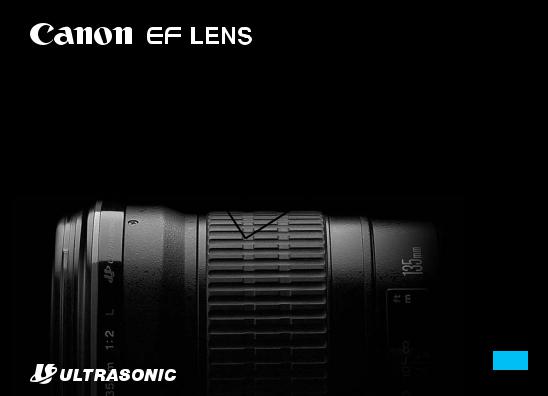
EF135mm f/2L USM
EF200mm f/2.8L II USM
EF300mm f/4L USM
EF400mm f/5.6L USM
COPY
ENG
Instructions
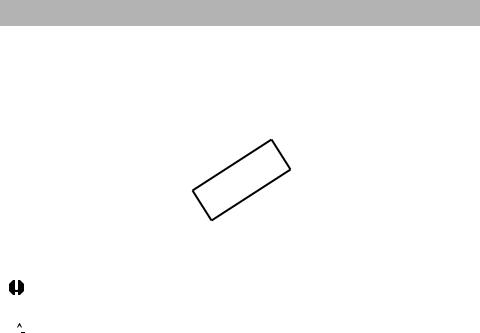
Thank you for purchasing a Canon product.
The Canon EF135mm f/2L USM, the EF200mm |
Features |
||||||
f/2.8L II USM, the EF300mm f/4L USM, and the |
|
||||||
1. UD lens elements (in the EF135mm f/2L |
|||||||
EF400mm f/5.6L USM are high-performance |
|||||||
USM, the EF200mm f/2.8L II USM, the |
|||||||
telephoto lenses designed for EOS cameras. |
|||||||
EF300mm f/4L USM, and the EF400mm |
|||||||
|
|
|
|
|
|
||
¡“USM” stands for Ultrasonic Motor. |
f/5.6L USM) and super UD lens elements (in |
||||||
|
|
|
|
|
|
the EF400mm f/5.6L USM) for excellent |
|
|
|
|
|
|
|
imaging performance. |
|
|
|
|
|
|
|
2. Ultrasonic motor (USM) for quick and quiet |
|
|
|
|
|
|
|
autofocusing. |
|
|
|
|
|
|
|
3. Manual focusing is available after the subject |
|
|
|
|
|
|
|
comes into focus in autofocus mode (ONE |
|
|
|
|
|
|
|
SHOT AF). |
|
|
|
|
|
COPY |
|||
|
|
|
|
|
|
4. The lens is compatible with Extender EF1.4X |
|
|
|
|
|
|
|
ll and EF2X ll. |
|
|
|
|
|
|
|
||
Conventions used in this instruction |
|
|
|||||
|
|
|
|
Warning to prevent lens or camera |
|
|
|
|
|
|
|
malfunction or damage. |
|
|
|
|
|
|
|
Supplementary notes on using the lens |
|
|
|
|
|
|
|
and taking pictures. |
|
ENG-1 |
|
|
|
|
|
|
|||
|
|
|
|
|
|
||
|
|
|
|
|
|
||
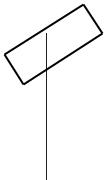
|
|
|
|
|
|
|
This device complies with Part 15 of the FCC Rules. Operation is |
a Safety Precautions |
|
||
|
subject to the following two conditions: (1) This device may not |
||
• |
Do not look at the sun or a bright light source |
|
cause harmful interference, and (2) this device must accept any |
|
through the lens or camera. Doing so could result |
|
interference received, including interference that may cause |
|
in loss of vision. Looking at the sun directly through |
|
undesired operation. |
|
|
Do not make any changes or modifications to the equipment |
|
|
the lens is especially hazardous. |
|
|
|
|
unless otherwise specified in the instructions. If such changes or |
|
• |
Whether it is attached to the camera or not, do |
|
|
|
modifications should be made, you could be required to stop |
||
|
not leave the lens under the sun without the |
|
|
|
|
operation of the equipment. |
|
|
lens cap attached. This is to prevent the lens from |
|
This equipment has been tested and found to comply with the |
|
concentrating the sun’s rays, which could cause a |
|
limits for a class B digital device, pursuant to part 15 of the FCC |
|
fire. |
|
Rules. These limits are designed to provide reasonable protection |
|
|
|
against harmful interference in a residential installation. This |
|
|
|
equipment generates, uses and can radiate radio frequency |
Handling Cautions |
|
energy and, if not installed and used in accordance with the |
|
• |
If the lens is taken from a cold environment into |
|
instructions, may cause harmful interference to radio |
|
communications. |
||
|
a warm one, condensation may develop on the |
|
|
|
|
However, there is no guarantee that interference will not occur in |
|
|
|
|
|
|
lens surface and internal parts. To preventCOPYa particular installation. If this equipment does cause harmful |
||
|
condensation in this case, first put the lens into an |
|
interference to radio or television reception, which can be |
|
airtight plastic bag before taking it from a cold to |
|
determined by turning the equipment off and on, the user is |
|
warm environment. Then take out the lens after it |
|
encouraged to try to correct the interference by one or more of |
|
has warmed gradually. Do the same when taking |
|
the following measures: |
|
the lens from a warm environment into a cold one. |
|
• Reorient or relocate the receiving antenna. |
|
|
• Increase the separation between the equipment and receiver. |
|
• Do not leave the lens in excessive heat such as in |
|
||
|
• Consult the dealer or an experienced radio/TV technician for |
||
|
a car in direct sunlight. High temperatures can |
|
|
|
|
help. |
|
|
cause the lens to malfunction. |
|
|
|
|
|
|
|
|
This Class B digital apparatus complies with Canadian ICES-003. |
|
|
|
|
|
|
|
|
|
|
|
|
ENG-2 |
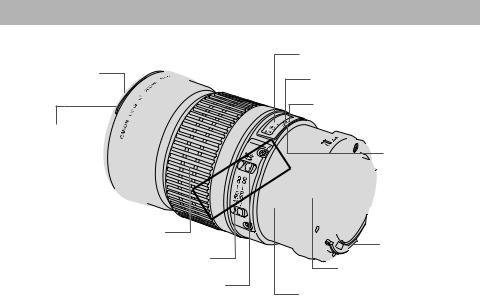
Nomenclature
Hood mount*1 (→ 8)
Filter mounting thread (→ 9)
Focusing ring (→ 4)
Distance scale (→ 5, 6)
Infrared index*3 (→ 6)
Depth-of-Field scale (→ 6)
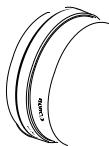 COPY
COPY 



Distance index (→ 5)
Contacts (→ 4)
Focusing distance range selection switch (→ 5)
Lens mount index (→ 4)
Focus mode switch (→ 4)
Tripod mounting location*2 (→ 7)
*1) EF135mm f/2L USM • EF200mm f/2.8L II USM
*2,3) EF200mm f/2.8L II USM • EF300mm f/4L USM • EF400mm f/5.6L USM
For detailed information, reference page numbers are provided in parentheses (→ **).
ENG-3
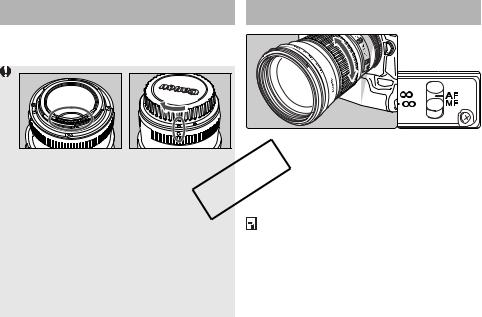
1. Mounting and Detaching the Lens 2. Setting the Focus Mode
See your camera’s instructions for details on mounting and detaching the lens.
|
|
To shoot in autofocus (AF) mode, set the focus |
¡After detaching the lens, place the lens with the |
mode switch to AF. |
|
|
||
|
COPY |
|
rear end up to prevent the lens surface and |
To use only manual focusing (MF), set the focus |
|
electrical contacts from getting scratched. |
|
mode switch to MF, and focus by turning the |
¡If the contacts get soiled, scratched, or have |
focusing ring. The focusing ring always works, |
|
fingerprints on them, corrosion or faulty |
|
regardless of the focus mode. |
connections can result. The camera and lens |
|
|
may not operate properly. |
|
After autofocusing in ONE SHOT AF mode, focus |
¡If the contacts get soiled or have fingerprints on |
|
|
|
manually by pressing the shutter button halfway |
|
them, clean them with a soft cloth. |
|
|
|
and turning the focusing ring. (Full-time manual |
|
¡If you remove the lens, cover it with the dust |
|
|
|
focus) |
|
cap. To attach it properly, align the lens mount |
|
|
|
|
|
index and the K index of the dust cap as shown |
|
|
in the diagram, and turn clockwise. To remove it, |
|
|
reverse the order. |
|
|
ENG-4
